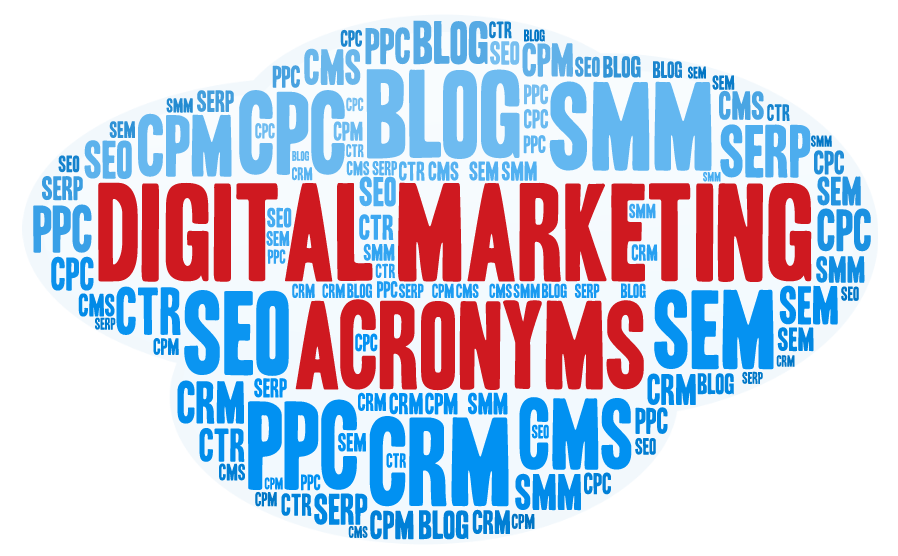
Here in this article, I’ve taken the time to break down all of the most common marketing acronyms you should know in marketing.
The marketing world is full of acronyms in an attempt to make the vast amount of verbiage easier to memorize and understand.
Acronyms can make the correspondence between sales and marketing more efficient. As a marketing pro, you’ll develop a whole new language—which mostly consists of three-letter content marketing acronyms and abbreviations.
This post will define some of the more common sales and marketing acronyms. But before you start mentioning any of it to make sales, make sure you’re using them correctly.
Any misunderstanding can lead to frustrations, which can lead to further strain on the already-tense relationship between sales and marketing.
What are the most common marketing acronyms
AIDA: Attention Interest Desire Action
AIDA is a marketing model that shows the steps a customer takes when going through the purchasing process. These are the outdated steps a consumer goes through from the beginning of a purchase funnel all the way through to actually making their purchase.
They start with noticing, then work through having interest, to deciding they want it, and finally actually purchase it. The four steps of the now somewhat outdated Purchase Funnel, wherein customers travel from consideration to purchase.
ARR: Annual Recurring Revenue
ARR is Used in most businesses that produce annual contract
ASP: Application Service Provider
These are businesses that provide services over computer networks. For example, a company that works with clients to send text message promotions to their customers.
AMA: ask me anything
AMA is an event that allows speakers to connect with the audience via answering questions. This term was popularized by Reddit.
B2B: Business to Business
Either a company serves other businesses or it directly serves consumers. Sometimes they do both. Whereas a business makes a commercial transaction with another
B2C: Business to Consumer
Whereas a business directly serves customers or consumers. Related to B2B
Also Read: What is Internet Marketing and How Do I Get Started? step by step guide
BANT: Budget, Authority, Need, Timeline
The four criteria sales reps use to qualify prospects. An advanced tool for sales reps and sales leaders use to help them determine whether their prospects have the budget, authority, need, and right timeline to buy what they sell.
- B = Budget: Can they afford it?
- A = Authority: Determines whether your prospect has the authority to make a purchasing decision.
- N = Need: Do they actually need what you are selling?
- T = Timeline: What’s the time frame for implementation?
BR: Bounce Rate
Website Bounce Rate
The total amount of visitors to your website, how many of them navigated away after viewing just a page?
The amount you get here is your bounce rate.
Email Bounce Rate
The rate at which an email was unable to be delivered to a recipient’s inbox. A high bounce rate generally means your lists are out-of-date or purchased, or they include many invalid email addresses.
BoFU (bottom of funnel):
The type of content created for the decision stage. This Marketing Acronyms should persuade them to choose your brand as a solution.
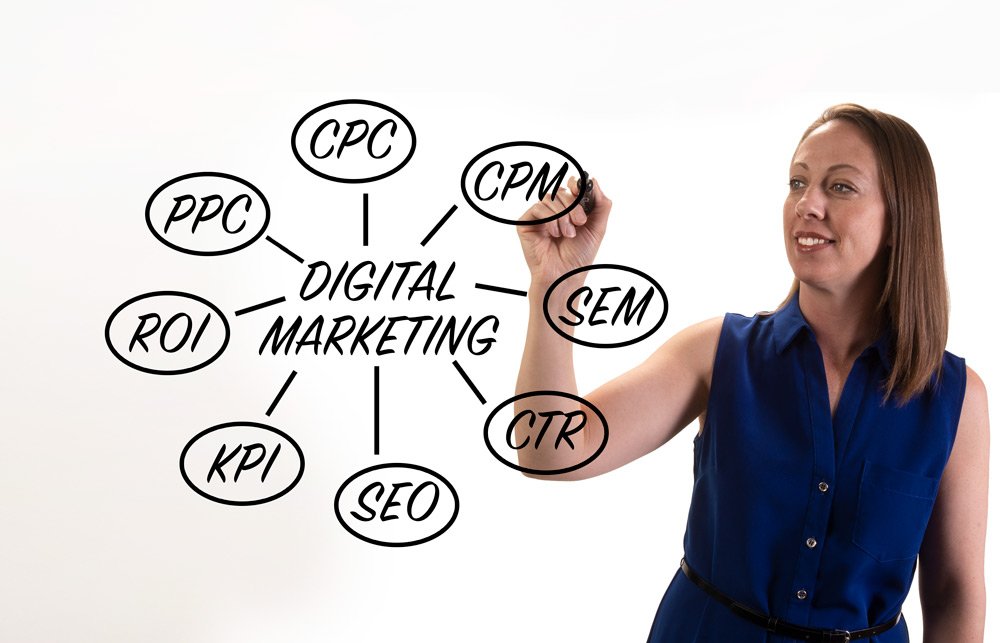
CAC: Customer Acquisition Cost
This number is calculated by dividing all the costs of customer acquisition by the number of acquired customers. The amount you had to invest into research, marketing money, getting your websites and profiles set up and continuing to run well, etc.
Also Read: How to become a business broker
CAN-SPAM: Controlling the Assault of Non-Solicited Pornography And Marketing
A U.S. law passed in 2003 that set the rules for commercial email and messages. This regulation gives recipients the right to have a business stop emailing them, and outlines the penalties incurred by those who violate the law. For example, CAN-SPAM is the reason businesses are required to have an “unsubscribe” option at the bottom of every email.
CASL: Canadian Anti-Spam Legislation
A Canadian law passed in 2013 that regulates the sending of “commercial electronic messages. CASL covers email, texts, instant messages, and automated cell phone messages sent to computers and phones in Canada.
CFO: Chief Financial Officer
The most senior executive is responsible for managing the financial risks at a company, including financial planning, record-keeping, and reporting. This person is the financial spokesperson of the company and typically reports to the CEO and the board of directors.
CLTV: Customer Lifetime Value
A projection that connects the net profit to the entire lifecycle relationship of a customer.
CIO: Chief Information Officer
Most senior executive responsible for the technical aspects of a company including management, implementation, and usability of information and computer technologies.
Also Read: The 5 Key Steps to Business Marketing Success
CMO: Chief Marketing Officer
A CMO’s skill set is rooted in marketing fundamentals but expands into personnel development, quantitative analysis, and strategic thinking.
CMS: Content Management System
A computer application that allows publishing, editing and organizing content from a central interface. Helps users with content editing and more “behind-the-scenes” work like making content searchable and indexable, automatically generating navigation elements, keeping track of users and permissions, and more.
COO: Chief Operating Officer
COO is a senior executive that manages and oversees the business operations within a company. They typically report to the CEO and are often second-in-command within a company.
COS: Content Optimization System
Take a CMS (Content Management System), and optimize it to deliver customers the most personalized web experience possible.
Also Read: SEO Content Writer
CPA: Cost Per Action
An internet advertising model where the advertiser pays for each specified action someone takes, like an impression, click, form submit, or sale. Every time someone clicks the banner to buys something or views the banner- you get money.
Every advertiser and arrangement is different, for example, you may just get paid when someone actually purchases something. However you make the arrangement, the amount you get paid is called “cost per action.”
CPC: Cost Per Click
The price you pay for every click in your PPC marketing campaign. Often used interchangeably with pay-per-click, CPC signifies the metric whereas PPC is an overall online marketing approach.
CPL: Cost-per-Lead
The amount it costs for your marketing organization to acquire a lead. This factors heavily into customer acquisition cost (CAC), and is a metric marketer should keep a keen eye on.
CPM: Cost Per Mille
If you are doing a large marketing campaign, the amount it costs to reach one thousand people via a particular advertising type or medium. It’s also known as CPT (cost per thousand). it’s a term used to measure the cost of obtaining 1,000 impressions or views for a specific advertisement.
CR: Conversion Rate
The number of people who took the action you wanted them to on a single web page, such as filling out a form. That percentage is the conversion rate.
Also Read: 155 Profitable buyer keywords you need in your SEO strategy
CRM: Customer Relationship Management
This is when a company looks at the history of interactions it’s had with its customers and determines how it wants to interact with them in the future. In a simplified example, a company can see that a consumer opened all the emails about a particular product and clicked links to look at it, but didn’t purchase. So the company can send them a follow-up email with a special promotion for that particular item.
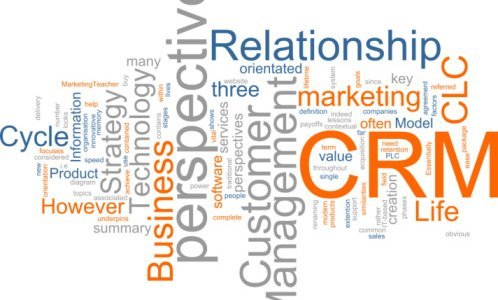
CRM: Customer Relationship Management (software)
CRM is a Software used to centralize customer data. CRM software is also used for marketing and sales force automation. Customer relationship management software gives you valuable insights into prospective and current buyers, which help marketers and sales reps provide more personalized experiences.
The goal is to create a system in which Sales has lots of information at their fingertips and can quickly pull up everything about a prospect or existing customer.
CRO: Conversion Rate Optimization
It’s a process that helps to optimize your website or landing page to increase the percentage of visitors that will take action on a page. Increase the conversion rate of users who visit a website and end up purchasing.
Also Read: How to Start a Business Plan Writing Service
CTA: Call to Action
It’s usually a button or text that seeks to encourage a visitor to perform a certain act instantly. For instance, buy now, register today, free download, etc.
Calls-to-action draws buyers in and allows businesses to start (or continue) engagement with their brand. Placing CTAs to gated content within a blog post or email can help move prospects through the sales funnel.
CTO: Chief Technology Officer
The CTO is the most senior executive responsible for focusing on the science and technology within an organization. This role is most common in companies within technology-based industries such as software or eCommerce.
CTR: Click Through Rate
The number of clicks that your content receives divided by the number of times your ad is shown and can be used to measure how successfully keywords and ads are performing.
Marketers can see how effective their efforts have been by looking at the click-through rate. A high CTR usually means the content is relevant and interesting to the audience.
CX: Customer Experience
This is what we call the entire process a consumer goes through from knowing about your brand through to purchasing, purchasing again, interacting with staff, with the website, etc. Customer experience dictates a buyer’s perception of your brand, so make sure every time an individual engages with your brand, it’s positive and helpful.
A positive experience encourages prospective buyers to become customers and current customers to stay.
DA: Domain Authority
Domain Authority is a search engine rating metric. DA is a predictor of how likely a website will rank. Now websites have a single score to compare themselves against other websites.
Also Read: How to start an Apartment Locator Business
DM: Direct Mail, or Direct Message (Social Media)
Direct Mail:
Sending physical mail via post to recipients. Also known as “junk mail” this no longer converts a cold audience into a customer anymore.
Direct Message:
A message on a social media platform used to get in touch with followers of an account directly and in private. DMs can be sent from one person to another or within a group. Most accounts only allow DMs from their followers, but many businesses allow DMs from anyone.
ESP: Email Service Provider
A company that offers email marketing or bulk mail.
FAB: Features, Advantages, Benefits
This is used to remind the sales team to focus on the benefits a customer will gain from their product and service.
FAQ (frequently asked questions)
A list of questions together with answers on a specific topic and details about solutions, processes, and services.
FTP: File Transfer Protocol
If you have a large number of files to send (think an entire website of files, a ton of videos, etc) you can use FTP to
transfer the files from one host to another over the internet.
FUD: Fear Uncertainty, Doubt
A sales method that is used to get customers to leave
Also Read: How to start a Beauty Product business
GA: Google Analytics
A service by Google that generates detailed statistics about a website’s traffic and traffic sources, and measures conversions and sales. This is added to your website and then presented to you on a private dashboard.
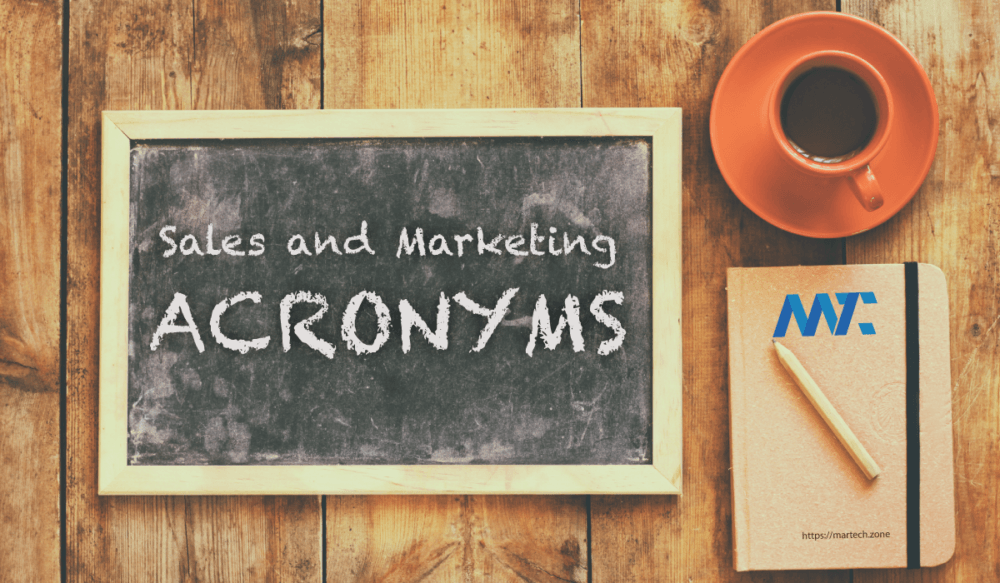
GDD: Growth Driven Design
This is a redesign or development of a website in international increments making continues data driven adjustment.
GRP (gross rating point)
A measurement of advertising effectiveness across media channels.
HPPO: highest paid person’s opinion
A decision-making option that is based on the opinion of the most senior person in the room rather than data.
IBL: Inbound Link
A link back to your site from another website.
Also Read: How to start an auction business
IM: Instant Messaging
When you send a typed message to another person in real time.
KPI: Key Performance Indicator
A type of performance measurement companies uses to evaluate an activity’s success. While KPIs are used throughout a business, marketers look at KPIs to track progress toward marketing goals.
KPI (Key performance indicators) are objective measurements that help companies make informed decisions about the effectiveness of their sales and marketing techniques.
LP: landing page
A page on your website that is created for a particular purpose, such as offering a free trial, app downloads, ebooks, newsletter subscription, etc.
MoM: Month-over-Month
This is used when you are comparing a month of a certain year with the same month of the previous year.
MRR: Monthly Recurring Revenue
This is used to track the amount of revenue a subscription-based business receives every month. Includes averaging lost customers averaging with the rate new customers subscribe.
Also Read: 5 Negative Words To Avoid When Writing A Sales Letter
MTD: Month-to-Date
A time period starting at the beginning of the current month and ending at the current date.
MQL: Marketing Qualified Lead
it means that marketing activities encouraged to engage a potential customer that is likely to become a buyer. For example, communicating on social media, downloading ebooks, reading newsletters, filling an online form, etc.
MQLs are usually in the top or middle of the sales funnel but can be nurtured into SQLs (defined below) when the marketing and sales teams collaborate.
NPS: Net Promoter Score
This is a number from 0-10 that measures the degree to which people would recommend your company to others. This number can be used to determine how to improve a company’s product or service.
OBL: Outbound Link
A link from your site to another website
OKR: Objectives and key Results
Management strategy that helps to set measurable goals and keep teams within an organization focused.
PA: Page Authority
Page Authority is calculated the same as Domain Authority and has the same rating system (0-100). The difference is that Page Authority is a score for a single page on a website.
PM: Project Manager
Project managers manage the various aspects of a project but do not actually contribute to the project elements. They are responsible for increasing productivity, reducing risk, maximizing benefits, and minimizing costs. They are the point person for any issues that arise inside or outside the project team.
Also Read: How To Target The Right Customers For Your Business
PPC: Pay-per-Click
An internet advertising model where advertisers pay a publisher (usually a search engine, social media site, or website owner) a certain amount of money every time their ad is clicked.
For search engines, PPC ads display an advertisement when someone searches for a keyword that matches the advertiser’s keyword list, which they submit to the search engine ahead of time.
PR: PageRank
How Google ranks software and calculates how well your page connects with the search words entered.
PR: Public Relations
The act of getting a company, brand, product or person in front of the right audiences at the right time. Ideally, consumers watch it and it sounds like genuine recommendations or information vs. an advertisement that would turn them off. Examples of good PR:, being featured in a magazine, TV show, special event, celebrity, news article, podcast, etc.
PV: Page View
How many people viewed a specific web page. This isn’t general to the entire website, it’s for a particular page within a website.
Also Read: How to run a successful business
QoQ: Quarter-over-Quarter
This is used when you are comparing a quarter of a certain year with the same quarter of the precious year.
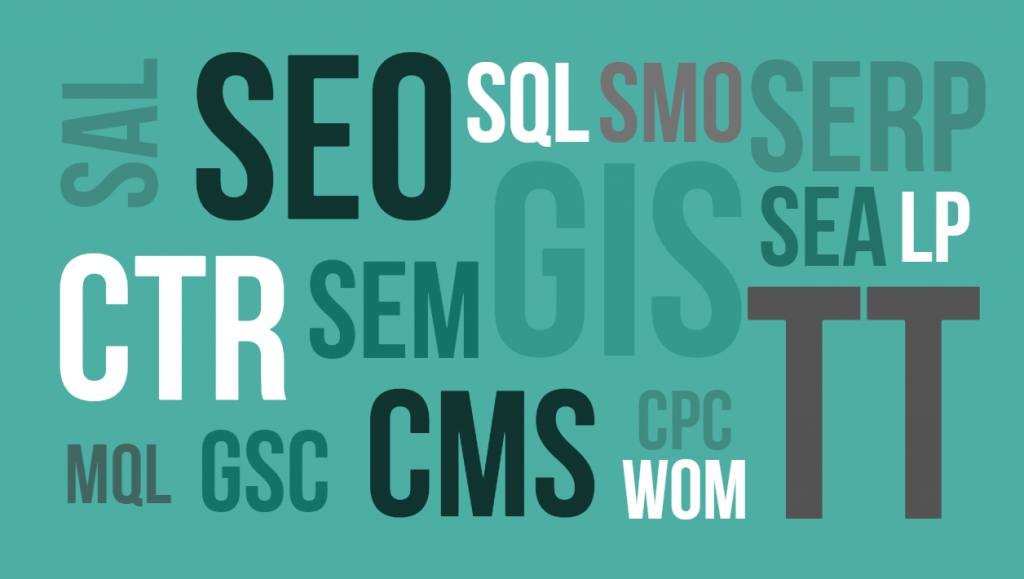
QR Code: Quick Response Barcode
Scannable barcodes used by marketers to bridge offline and online marketing. When people see them, they can take out their smartphone and scan the QR code using a QR barcode scanner app.
RFP: Request For Proposal
When a company is seeking marketing representation they will use RFP (Request For Proposal)
ROAS (return on ad spend):
A type of performance measurement that is used to evaluate the success of a digital advertising campaign.
ROI: Return on Investment
If you invested $250 into a marketing campaign and made $2500, you had a $2250 return on investment. This the amount is just how much you got back on an investment you made of any kind.
ROI helps businesses determine if a potential investment (for example, marketing automation software) will be worth the upfront and ongoing costs or if a current investment should be continued or terminated.
ROMI (return on marketing investment)
A type of performance measurement that is used to evaluate the overall success of a marketing campaign
RSS: Rich Site Summary
An RSS Feed is a web feed that publishes frequently updated information like blog posts, news stories, and podcasts. They let publishers syndicate data automatically, which is why they’re sometimes known as “Really Simple Syndication.
Also Read: How to write ad copy that sells
SaaS: Software-as-a-Service
If you’ve ever used an online software or downloaded it onto your computer, you’ve used SaaS. For example, if you use accounting software that’s SaaS. These are typically on subscription.
SAL: Sales Accepted Lead
SAL helps a sales rep decide whether they should invest their time and resources into following up on a lead.
SEM: Search Engine Marketing
A strategy that helps to target users via paid advertising that can be found on search engine results pages. Companies pay to have their websites come up above the rest to increase the likeliness you’ll click them vs scrolling down to the nonsponsored
posts.
SEO: Search Engine Optimization
Techniques that help your website rank higher in organic search results, making your website more visible to people who are looking for your brand, product, or service via search engines like Google, Bing, and Yahoo.
This is when you optimize your website and content in order to appear in search engine results for keywords you want to be associated with. This is organic (free) to implement whereas SEM (see above) is the paid version.
Also Read Why SEO is important for business
SERP: Search Engine Results Page
A search engine page that displays results based on the search query that was requested.
SFA: Salesforce Automation
A software that automate sales activities
SLA: Service Level Agreement
An agreement between a company’s sales and marketing teams that defines the expectations Sales has for marketing and vice versa.
A service level agreement ensures that every party involved—sales, marketing and the client—are all on the same page regarding expectations.
SMB: Small-to-Medium Business
Companies that have between 10 and 500 employees.
SM: Social Media
Social media platforms are places you can post links, photos, videos, and other content, in the hopes that thousands of people will see it, click on it, interact with it, and share it with their own networks. Some of the big ones: Facebook, Twitter, Instagram, and Snapchat.
SMM: Social Media Marketing
When you use social media to market your business to customers, potential customers and social media users
SMO: Social Media Optimization
Leveraging various social media communities to increase publicity around a brand.
SOV: Share of Voice
An online advertising ad revenue model that focuses on weight or percentage among other advertisers.
SPIN: Situation, Problem Implication, Need
A sales techniques that is a hurt and rescue approach
SQL: Sales Qualified Lead
it means that the sales team has identified a lead as a potential buyer. SQLs have been vetted by both the marketing and sales departments and have the highest potential to become customers, as long as the sales rep engages them correctly.
Also Read: How to write a sales letter
SWOT: Strengths, Weaknesses, Opportunities, Threats
A SWOT analysis gives a strategic view of the main opportunities and challenges that exist within a company’s brand or market. type of company analysis that helps to identify all strengths, weaknesses, opportunities, and threats before making important decisions.
ToFU (top of funnel)
A type of content that is created for the awareness stage. Customers are unaware of your company and you want to get their attention.
TOS: Terms of Service
A Terms a user has to agree with in order to use a particular software, service, product, etc.
UGC: User Generated Content
When users of a particular online system or service create content related to that business.
UI: User Interface
The part a user sees on a web application.
UV: Unique Visitor
A person who visits a website more than once within a defined period of time. Marketers use this term in contrast with overall site visits to track the amount of traffic on their website. If only one person visits a webpage 30 times, then that web page has one UV and 30 total site visits.
VOD: video on demand
A system that allows users to access and view video content without the traditional broadcasting system, i.e. whenever they prefer via their computers and TVs.
WOM: Word of Mouth
A person shares their experience with a product or brand in writing or verbally with someone else.
Also Read: How To Optimize Your Google My Business
WWW: World Wide Web
How the internet organizes its web pages.
YoY: Year-over-Year
Changes in levels expressed with respect to the previous year.
YTD: Year-to-Date
The time period starting at the beginning of the current year and ending at the current date.
Good day very cool website!! Guy .. Beautiful .. Amazing .. I’ll bookmark your web site and take the feeds also? I am happy to find numerous helpful info here in the publish, we need work out extra techniques on this regard, thank you for sharing. . . . . .|
Great article. I will be dealing with some of these issues as well..|
There’s certainly a lot to know about this subject. I love all of the points you made.|
If some one desires to be updated with hottest technologies after that he must be pay a visit this web site and be up to date everyday.|
Generally I do not learn post on blogs, but I would like to say that this write-up very forced me to try and do it! Your writing taste has been surprised me. Thank you, very great post.|
Thanks for sharing such a pleasant idea, post is good, thats why i have read it fully|
What’s up everyone, it’s my first pay a quick visit at this website, and post is truly fruitful in favor of me, keep up posting these posts.|
My spouse and I stumbled over here different website and thought I might check things out. I like what I see so i am just following you. Look forward to going over your web page again.|
Thanks to my father who shared with me regarding this weblog, this web site is truly awesome.|